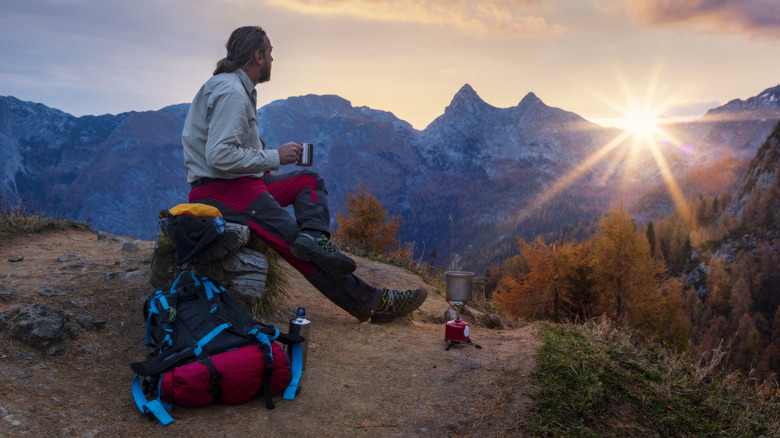You’ve picked your route, packed that extra pair of socks, and are ready to hit the trails on a long-distance hiking adventure that’ll take you through some of the most breathtaking landscapes. There’s just one thing left to figure out: What are you going to eat and drink along the way?
Choosing and packing your food before a long hike is a feat of its own. After all, you’re probably going to be away from most comforts for a while — think gas stoves, fancy cookware, and refrigerators. Instead, you’re stuck with what you can carry (and no, non-stick pans don’t travel very well) and what you can quickly and easily prepare.
However, this doesn’t mean that you have to sacrifice taste and health. It just means that you need to get a little creative (and smart) about your food and drink choices. From stocking up on hydration salts to dehydrating your own food or putting together “meal packs” to make prep a lot easier, there are plenty of steps you can take to ensure that your hike doesn’t turn into a hangry disaster. Did someone say gourmet trail cuisine? Yes, chef!
Hydration is key
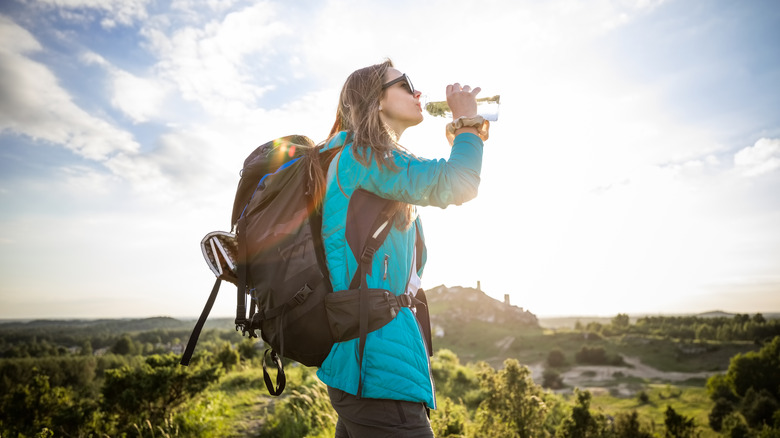
Staying hydrated while outdoors is key to maintaining energy levels and preventing health issues. In fact, it’s one of the most important things to remember. But why does it matter so much? Well, forgetting to hydrate properly before and during a hike could lead to some pretty serious consequences, including heat exhaustion, loss of strength, UTIs, kidney failure, and even seizures.
In order to successfully hydrate for a hike, it’s important that you drink at least 20 to 32 ounces of water before the hike even begins. From there, you’ll want to drink 32 ounces of water roughly every two miles. This doesn’t mean guzzling down water, though — small sips at regular intervals should be enough. Additionally, if you’re hiking at higher altitudes, this amount should be doubled since your body tends to lose water nearly twice as fast.
As for enhancing your hydration, bring along some hydration packets to add to your water. Not only will these replenish essential electrolytes, but they’ll also help you rehydrate faster than regular water. And don’t forget: If you’re drinking water only when you feel thirsty, you’re probably already dehydrated.
Choose non-perishables
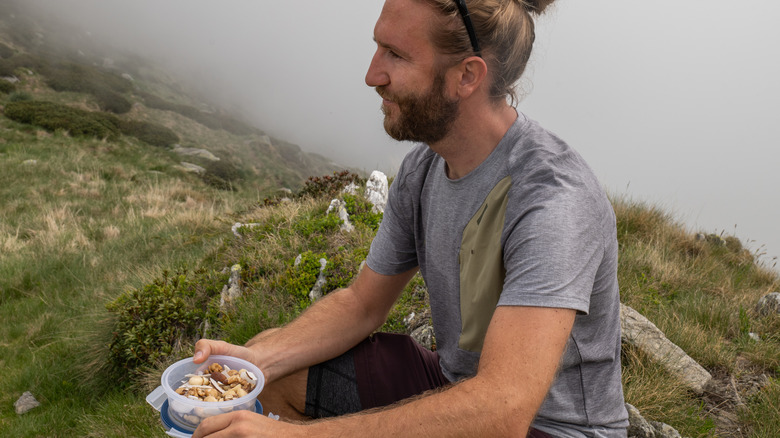
If you’re going to be hiking for multiple days, you’re probably not going to have access to the same food storage that you do at thome. That typically means no fridge or freezer, which also means that you won’t want to bring along any food items or drinks that won’t last outside of a cool box or go bad under the outdoor sun.
With that in mind, you’ll want to be careful with fresh produce. Choose items that don’t require refrigeration, like apples, bananas, and oranges, and plan to eat them during the early stages of your hike.You can also consider dehydrating fruit and vegetables in order to make them last longer. In fact, certain dehydrated veggies can last up to 25 years if stored properly — but, hopefully, you won’t be hiking that long.
Other options of trail-ready foods include granola or muesli bars for breakfast, as well as beef jerky, bags of tuna, hummus and crackers, pita wraps, cold cuts and cheese, instant soups and noodles, boil-in-a-bag rice, pasta with jarred sauce, and variations of other ready-to-eat meals for lunch and dinner.
Consider weight and space
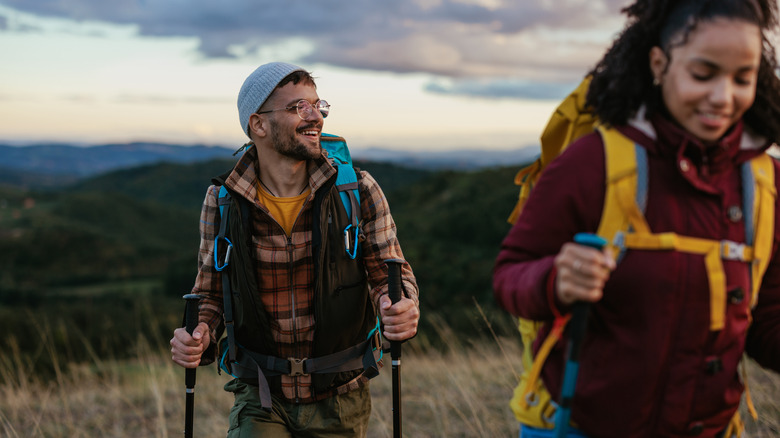
Dimensions/Getty Images
One of the cardinal rules of hiking is that you never want to bring more than you can carry. However, things can get a little more complicated if you’re gearing up for a multi-day hike and still need to bring enough food to keep you energized and satisfied.
Ideally, you’ll want to bring anywhere between 1.5-2.5 pounds of food per person, per day — and even more if your hike is going to be strenuous. This means that you need to choose your items very carefully if you don’t want your back to take the brunt of the extra weight.
Make sure to avoid tins, glass jars, and any other bulky packaging. Instead, you’ll want to reach for lightweight versions of your favorites (like tuna in a bag instead of a can) and single-serving packets. You should also repackage bigger items into daily servings so you’re never carrying more than you need. Pro tip: Pack your spices in a straw so you can still add some flavor to whatever you cook without bringing along your entire spice drawer.
Easy prep always wins
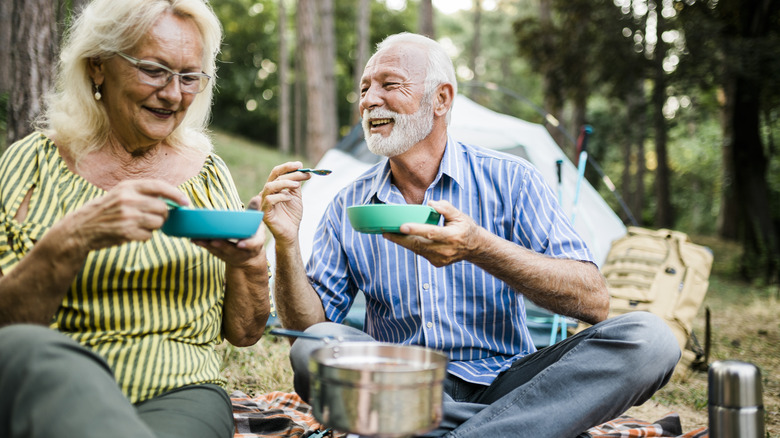
Eleganza/Getty Images
Let’s be honest: That coast-to-coast hike you’re about to embark on probably isn’t the best time to try out a new, complicated recipe that requires 20 minutes of prep time. Nobody has the time (or patience) for that — especially after hiking for miles, when all you crave is to cozy up to the fire with a warm meal.
When you prepare for your hike, think of quick and easy meals that you’ll still enjoy but won’t require too much time or effort to prepare. For example, you can trade up your fancy ramen for an on-the-go noodle cup (bonus points if you add some dehydrated mushrooms and carrots), satisfy your pasta cravings with a mac and cheese cup, and even fuel up for breakfast with a pre-packaged oatmeal or granola mix.
One-pot meals are always a winner, too. Couscous, loaded scrambled eggs, and beans are always a great option — and, luckily, no one’s going to be around to judge you on presentation. Not only will these quick-cooking meals keep you satisfied, but you’ll probably need a lot less water to make them, which means you won’t have to carry as much or ration your water supply as strictly. It’s a win-win.
Keep things organized
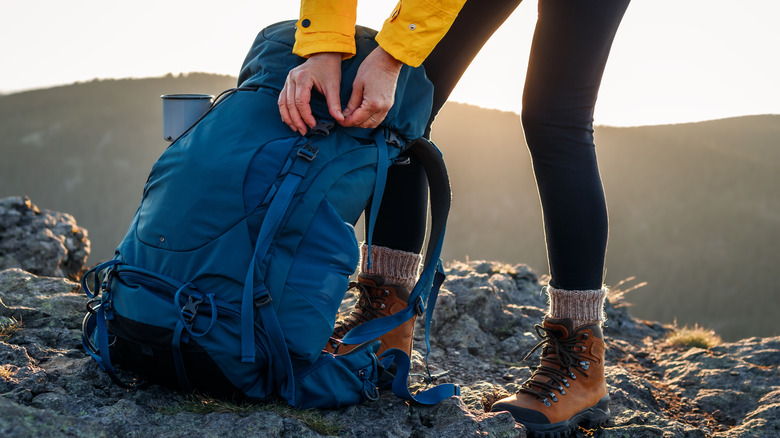
Zbynek Pospisil/Getty Images
Hiking long-term means you’re forced to live out of a backpack — and most of your things will probably end up scattered around by day two or three. Loose socks mingling with your morning coffee? No, thanks!
In order to avoid this, it’s always best to keep things really organized. That could mean packing ingredients into “meal” bags so you know what to reach for, using separate compartments for different types of gear, or labeling your items for easy identification — just make sure you have a system in place that’ll save you from having to dig through your bag for a missing spice or utensil.
Choosing different colored bags for different meals is a great system that’ll be easy to follow. Along with this, reusable wax wraps are a way to extend the life of certain items and keep things dry. Alternatively, silicone bags also work well for snacks and small food items — and they cut down on harmful waste like single-use plastics and wrappers. From there, it’s all five-star dining under the starry skies.

